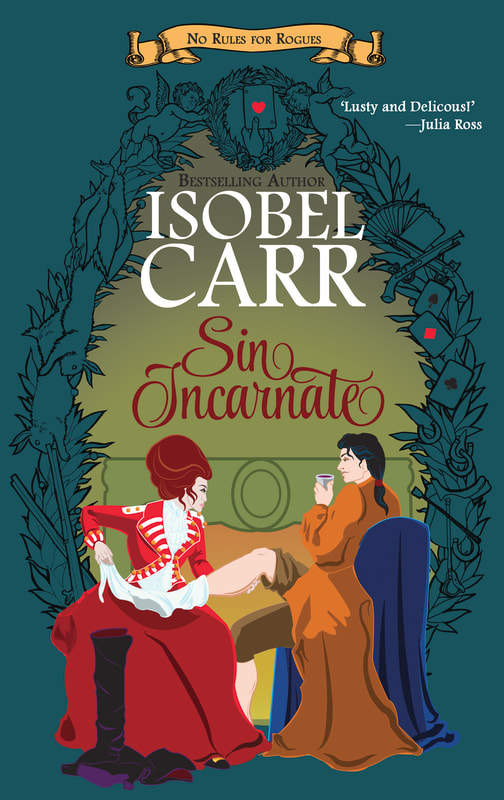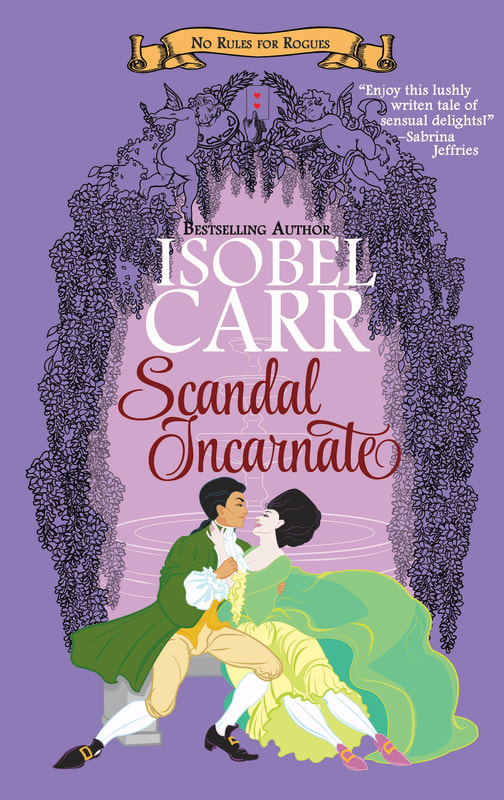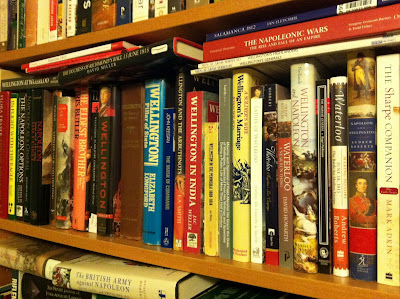I have what is very big news for me: I finally got all my ducks in a row, and my old Kalen Hughes books, which have been out of print for several years now, are available again! The eBooks are up on Amazon and enrolled in KU for the first 90 days. The print books are also there, but I’m having a bit of trouble linking them up.
I have spiffy new covers, by Jessica T. Cohen (one of my best friends, who happens to be a professional illustrator). I’m gonna give her a plug here, because she’s really amazing and you should check out her work. She’s got covers coming for Pam Rosenthal soon, and they’re pretty spectacular. She’s open for bookings and she can do fine art styles in a host of different styles and mediums as well as the style you see here. She even did custom “dingbats” for my chapter headings and scene breaks.
Sin Incarnate

I knew I wanted to try illustrated covers (who knew they’d suddenly be big again and I’d be on trend for the first time in my professional life?!). Jess and I put our heads together and decided on a clean “paper cut” look for them, with additional embellishments. I was blown away by what she came back with. I simply adore the arches. And the putti. Everything is better with putti.
Scandal Incarnate

They’ve been brought over to my Isobel Carr pen name, and given new and infinitely better titles (IMO). And look, my half-Turkish hero isn’t BLOND AND HAIRY on the cover this time around. *roll eyes*
I had a ton of fun doing the typography layout on top of Jessica’s amazing art. There was just something really rewarding about combining our two skillsets and making someone beautiful and functional. And yes, the “sexually aggressive heroines” was a theme we’d consciously gone with long before that horror movie poster hit Twitter, LOL! And we’ll be sticking with it.
The whole experience has been very enlightening, and I have to give major thanks to Carolyn Jewel and Zoe York for all their help and advice and handholding. I’ve been a complete wreck trying to figure all this self pub stuff out. It’s actually really hard to find all the basic info on format and size and file type. Every time I thought I had what I needed, I’d get an error message informing me I was wrong. Hopefully things will go smoother from now on … though I’m waiting for the plagiarism notification email from Amazon. You think by now they’d just have a place for you to upload your reversion letter when you’re setting up the book.
There’s a third cover in the works, for my previously “self-published only on my website” novelette, which I’m going to call Temptation Incarnate. I’ll have it up hopefully in the next week or two. And best of all, I finally have my writing mojo back! While I’ve been working on all of this, I have been noodling about (which is as close as I get to plotting) with ideas for then next Incarnate book, and low and behold it’s going to be F/F. My dashing lady rake popped into my head and announced that while she likes men fine, women are where it’s at for her. So the duke that was her destiny will get kicked to the curb early on and she and her lady-love with get their HEA.
Ok, Sapphic muse, let’s roll…



.jpg)